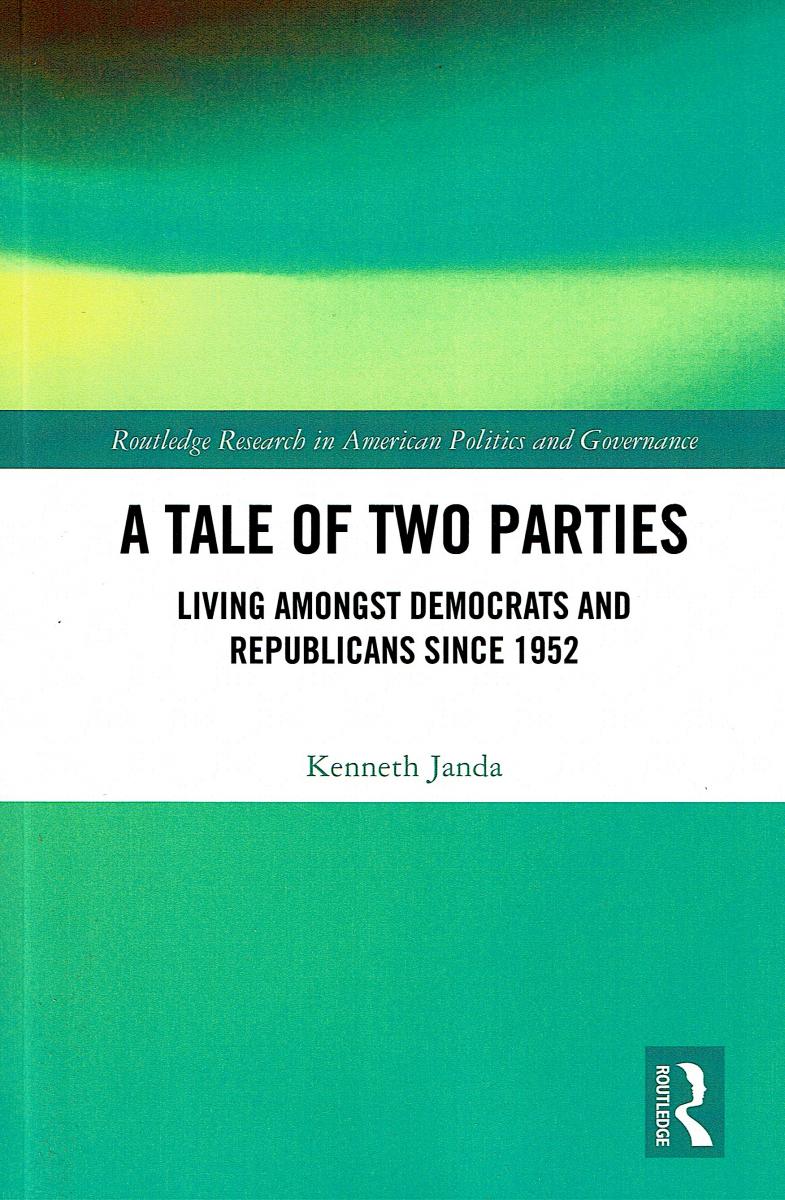A Tale of Two Parties: Living Amongst Republicans and Democrats Since 1952
Par : Kenneth Janda
Release date: Mar 2021
Routledge
Nombre de pages: 176
ISBN: 978-0-429-31736-1


Chapter 1 justifies the book’s title and establishes the book’s purpose: to explain how much American party politics have changed from 1952 to 2020, during the author’s lifetime. The chapter makes a case for stability in the American polity since its creation, emphasizing the two-party system’s perseverance over time.
Chapter 2 uses social identity theory to compare political party identifiers with sports fans, drawing extensively on sports research. It describes issues in measuring party identification in American National Election Studies voter surveys over the past seventeen presidential elections.
Chapter 3 discusses the limited role played in presidential elections by the two parties’ national committees. It distinguishes between (a) a social group’s party preferences and (b) that group’s share of party identifiers. Social groups are like the party’s “customers,” and parties appeal differently to its customer groups.
Chapter 4 reviews regional differences that were once great enough to cause civil war. Party differences persisted afterward for a hundred years; southern states voted solidly Democratic against a mostly Republicans in the north. Equal Group Appeal and Party Base Concentration scores assess regional differences in the parties’ bases.
Chapter 5 examines the relationship between political parties and voters’ economic status. During the 19th century, American politics regularly pitted manufacturing interests against agricultural interests. Using Equal Group Appeal and Party Base Concentration scores, this chapter shows that Republicans appeal more to and consist more of higher income groups than Democrats and that the tendency has increased slightly since 1952.
Chapter 6 analyzes party identification by levels of urbanization. In 1952, more Americans lived in small towns and rural areas than in cities, and relatively few lived in suburbs. Party affiliation varied little according to level of urbanization then. By 2020, more Americans lived in suburbs than in small towns and rural areas. Equal Group Appeal and Party Base Concentration scores reflected these developments.
Chapter 7 considers education as a base of party support. Since 1952, voters’ level of education has changed more than any of the six social cleavages considered in this book. In 1952, over 60 percent of survey respondents only had a high school education. Those voters chose Democrat Adlai Stevenson over Republican Dwight Eisenhower for president. Equal Group Appeal and Party Base Concentration scores are computed for educational groupings.
Chapter 8 evaluates religion as a social and political cleavage. In 1952, only 3 percent of ANES respondents failed to claim that they were Protestant, Catholic, or Jewish. In 2020, the connection between religion and party identification weakened and became more complicated, as reflected in Equal Group Appeal and Party Base Concentration scores.
Chapter 9 computes Equal Group Appeal and Party Base Concentration scores for Ethnicity. In the 1952 presidential election survey, interviewers classified respondents as white or Black by observation. Over 90 percent were observed to be white. In 2020, interviewers asked a series of questions to classify respondents as Non-Hispanic White 69 percent), Non-Hispanic Black (11 percent), Hispanic (12 percent), and other (8 percent). In 1952, 16 percent of the few Black respondents said they were Republican; in 2020 only 7 percent of many more Black respondents claimed that.
Chapter 10 analyzes the parties’ ideological bases. Strictly speaking, political ideology does not qualify as a social basis of party support. In fact, this chapter argues that voters adopt ideologies to conform to their social and political identities as much as they adopt parties to match their ideologies.
Chapter 11 reviews the quantitative analyses reported in Chapters 4 through 9. It introduces “box and stem” statistical displays, a different way to summarize the analyses. It also analyzes party identification by combinations of ethnicity, religion, urbanization, and education.
Chapter 12 inquires into the nature of contemporary American political parties and concludes by evaluating American political parties against the model of “responsible party government.”
Chapter 13 offers an epitaph to Donald Trump’s 2020 presidential campaign and a signal to the Republican Party.











